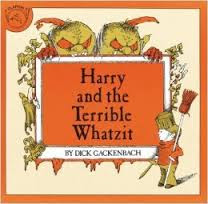DIY Calming/Mindfulness Bottle

This item of interest is an activity I started doing a while ago. I want to firstly point out that it is not evidence based. This activity is mostly a tool to help children cope with stress, worries, anxiety, etc. I usually use this activity with the younger children (K-3). The purpose of the activity is to teach children a strategy they can use in the moment when they are crying, panicked, stressed, or worried. It teaches children about self-regulation which is a necessary skill in order to help them be successful. Self-regulation is one of the skills that social workers can help educate the younger students about managing their emotions, and behavior.
To make it you can use an empty plastic water bottle of any kind, or a glass mason jar (or any jar). However, I usually only use plastic because kids drop stuff all the time and glass is messy and dangerous! To make it you will need a bottle of your choice with a lid, water, clear glue, gorilla or super glue, and food coloring. There are other methods to make it with glitter glue that work well too.
You start out by filling the bottle 3/4ths full of room temp water. Then you add about half a bottle of the clear glue (this can be changed depending on how slow or fast you want the glitter to slow down). Then I shake the water and glue together. After that add 1 drop of food coloring to sort of match the color of glitter you are using. Then you add the glitter. You can add more food coloring if necessary, however the fewer drops the better otherwise it will turn foggy and you won't be able to see the glitter. Shake it to combine everything. The last step is the most important, you want to make sure that you super glue the lid shut. Otherwise you'll have a very messy end product.
Usually before I make this with a student, I shake the bottle and ask them thoughtful questions like does your mind or body ever feel this way? You can discuss with them how when the glitter is moving fast and all over the place, sometimes our brain and bodies feel that way too when we are feeling anxious, stressed, worried, etc. Then when we use coping skills and other strategies, our brain and body can calm down like the glitter does. For younger kids, during crying/tantrums/freak outs, you can give them this to use as a timer and when the glitter is stopped, that means its time for them to stop too.
You can most certainly pair this activity with some evidence based tools like mindfulness. You can teach them deep breathing strategies (star breathing for younger kids). That way there is some evidence based treatment attached to the activity.
Usually before I make this with a student, I shake the bottle and ask them thoughtful questions like does your mind or body ever feel this way? You can discuss with them how when the glitter is moving fast and all over the place, sometimes our brain and bodies feel that way too when we are feeling anxious, stressed, worried, etc. Then when we use coping skills and other strategies, our brain and body can calm down like the glitter does. For younger kids, during crying/tantrums/freak outs, you can give them this to use as a timer and when the glitter is stopped, that means its time for them to stop too.
You can most certainly pair this activity with some evidence based tools like mindfulness. You can teach them deep breathing strategies (star breathing for younger kids). That way there is some evidence based treatment attached to the activity.



